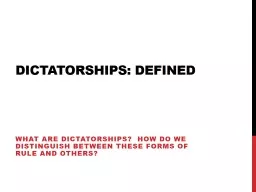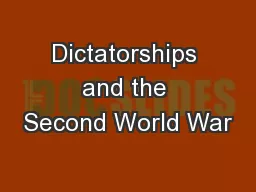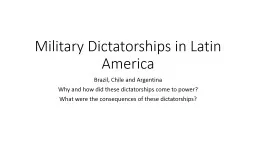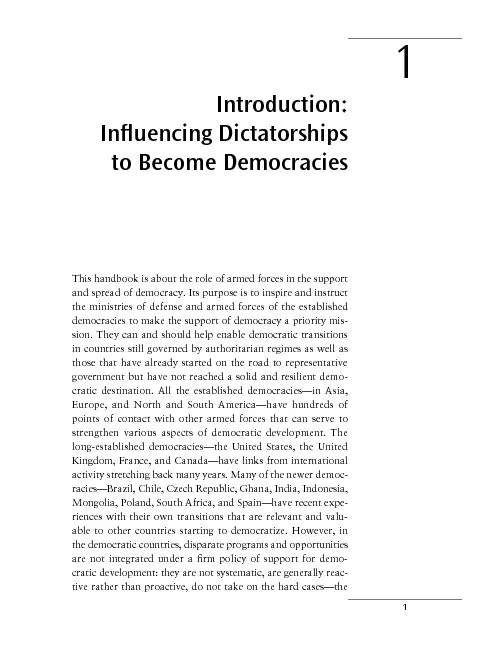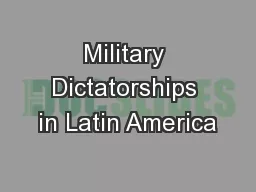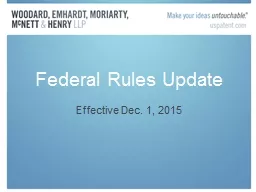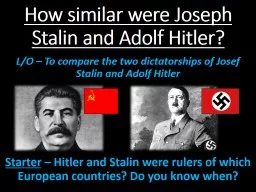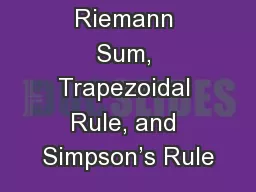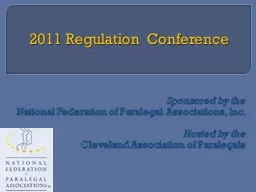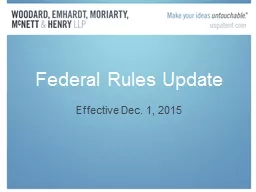PPT-What are dictatorships? How do we distinguish between these forms of rule and others?
Author : kittie-lecroy | Published Date : 2018-03-07
Dictatorships Defined Types of political regimes When and why do dictatorships emerge The concept of dictatorship has been used to characterize specific types of
Presentation Embed Code
Download Presentation
Download Presentation The PPT/PDF document "What are dictatorships? How do we disti..." is the property of its rightful owner. Permission is granted to download and print the materials on this website for personal, non-commercial use only, and to display it on your personal computer provided you do not modify the materials and that you retain all copyright notices contained in the materials. By downloading content from our website, you accept the terms of this agreement.
What are dictatorships? How do we distinguish between these forms of rule and others?: Transcript
Download Rules Of Document
"What are dictatorships? How do we distinguish between these forms of rule and others?"The content belongs to its owner. You may download and print it for personal use, without modification, and keep all copyright notices. By downloading, you agree to these terms.
Related Documents

